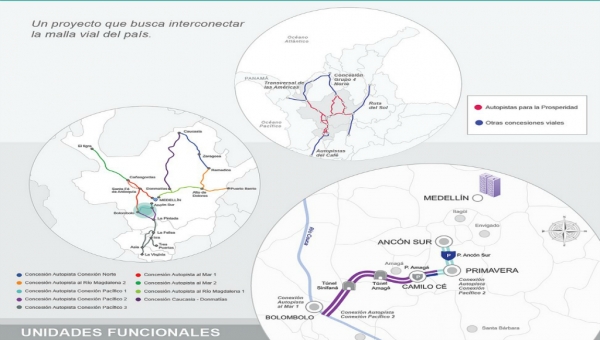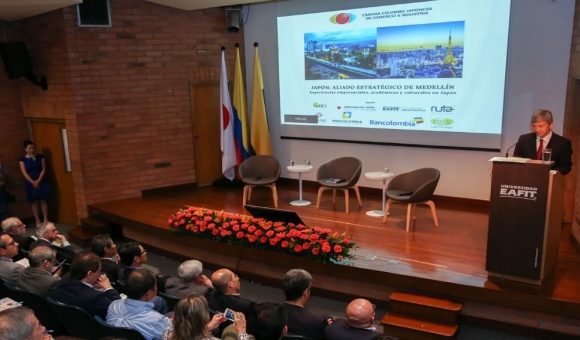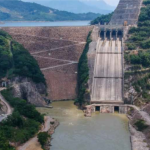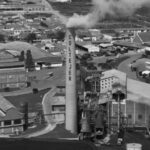Antioquia’s ‘Prosperity Highway’ Contracts Now All Finalized

Colombia’s national infrastructure agency (ANI, Agencia Nacional de Infraestructura) announced September 22 that it has now finalized and awarded the last of a series of nine construction contracts for the massive “Autopistas de Prosperidad” (prosperity highways).
The projects — once completed over approximately the next five to eight years — would vastly improve commercial and passenger highway transport throughout Antioquia, drastically reducing times for shipping goods to and from ports and enabling Medellin to have direct, quick access to the Atlantic via a new port.
The government estimates that completing the projects would cost about COP$15 billion (US$5 billion).
Tied to the new “Mar 2” highway project is the COP1.83 billion (US$593 million) “Túnel del Toyo” (Toyo tunnel) project, which at 9.75 kilometers in length will become Colombia’s longest tunnel.
That tunnel project will be funded mainly by the city of Medellin (COP$520,000 million/US$162 million), the department of Antioquia (COP$780,000 million/US$251 million), plus federal funding (COP$500,000 million/US$161 million).
Aside from the “tunel de Toyo,” the rest of the 245-kilometers-long “Mar 2” project – estimated to cost COP1.3 billion (US$419 million) — will include 27 other tunnels and 22 bridges, according to ANI.
The “Mar 2” project will connect with the “Mar 1” project, which connects Medellin westward to Santa Fe de Antioquia. “Mar 2” will link-onward Cañas Gordas, Uramita, Mutatá and El Tigre in Antioquia’s northern Uraba region. An ANI video (in Spanish) illustratating these projects can be found here.
“Mar 2” project will add 18 kilometers of divided highway between Uramita and Dabeiba, upgrade 31 kilometers between Uramita and Cañasgordas, rehabilitate another 109 kilometers between Necoclí and El Tigre, and upgrade anothers 46 kilometers between El Tigre and Mutatá, according to ANI.
Project consortium partners in “Mar 2” include China Harbour Engineering (with a 30% stake), Colombia-based SP Ingenieros SAS (30%), Pavimentar S.A. (25 %), Unidad de Infraestructura y Construcciones Asociadas SAS (10%), and Termotécnica Coindustrial (5%), according to ANI.
According to Colombia Vice President Germán Vargas Lleras, Antioquia benefit more than any department in Colombia from the resulting construction of the “generation four” (4G) highway projects.
The first of the “4G” projects in Antioquia now include “Conexión Pacífico 1” (connecting the southern Medellin suburbs all the way to Bolombolo on the Cauca River); “Conexión Pacífico 2” (connecting Bolombolo southward to La Pintada, alongside the Cauca River); “Conexión Pacífico 3” (connecting La Pintada southward to La Virginia); “Conexión Norte” (connecting Medellin northward to Remedios, Zaragoza and Caucasia); and “Magdalena 2” (connecting Remedios, Alto de Dolores, Puerto Berrio, Variante Puerto Berrío to the “Conexión Ruta del Sol,” which goes all the way to Santa Marta on the Caribbean coast).
Another two “4G” projects that have now been adjudicated include “Mar 1” (connecting Medellin to Santa Fe de Antioquia) and the just-contracted “Mar 2” onward-connecting Santa Fe de Antioquia to El Tigre, Vargas Llleras noted.
Two other separate but related “Asociaciones Público Privadas de Iniciativa Privada (APP-IP)” projects will connect Antioquia to the neighboring department of Bolívar, as well as the “Vías del Nus” project that formerly was known as “Mar 1,” according to ANI.
The point of all the highway projects is to “connect Antioquia to the principal centers of production and commerce of the nation,” Vargas Lleras added.
The “Mar 2” contract award follows only three weeks after the adjudication of the “Mar 1” contract, which will pass alongside the municipalties of San Jerónimo, Santafé de Antioquia, Bolombolo and Cañasgordas, ANI noted. Travel times between Medellin and Cañasgordas will be slashed to 1-hour-and-45-minutes, compared to 3 hours currently, according to ANI.
“Mar 1” will include construction of 41 bridges and 17 tunnels, as well as upgrades to existing highway segments plus the construction of divided highway segments between Medellin and Santa Fe de Antioquia. It also will add a second, 4.7-kilometers-long, parallel tunnel to the existing “Tunel de Occidente,” as well as rehabilitation of the current Bolombolo-Santa Fe de Antioquia highway alongside the Cauca River, according to ANI.
A recent study by the Universidad Pontificia Bolivariana and the Universidad de Antioquia found that the “prosperity highway” projects would double per-capita income in Antioquia and cut the unemployment rate to 5% in 14 years, according to a separate newspaper report from El Colombiano (Medellin).
















